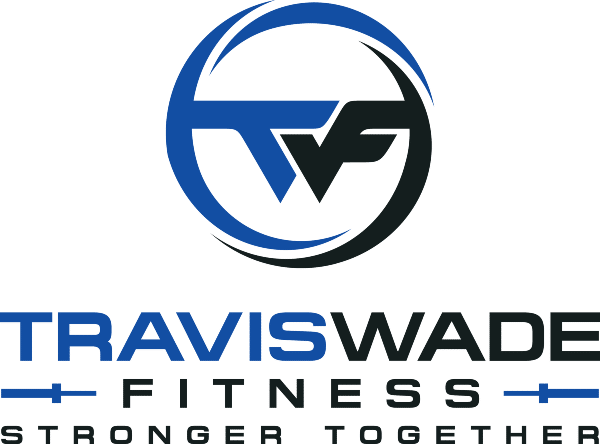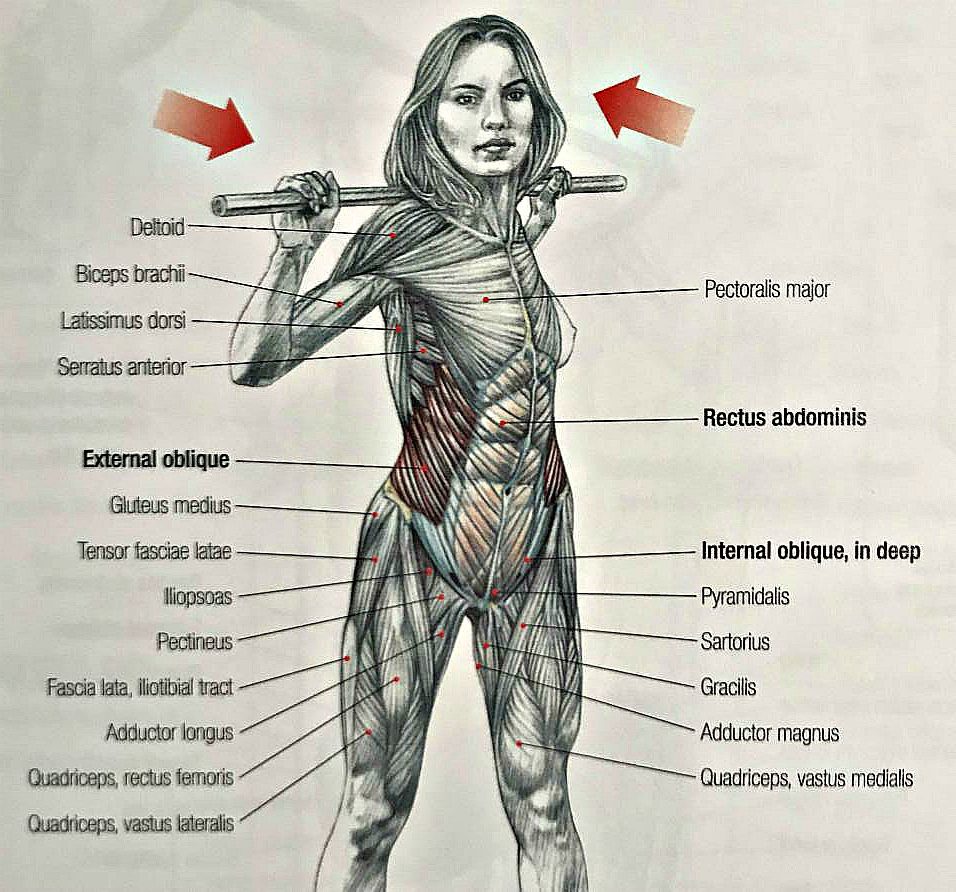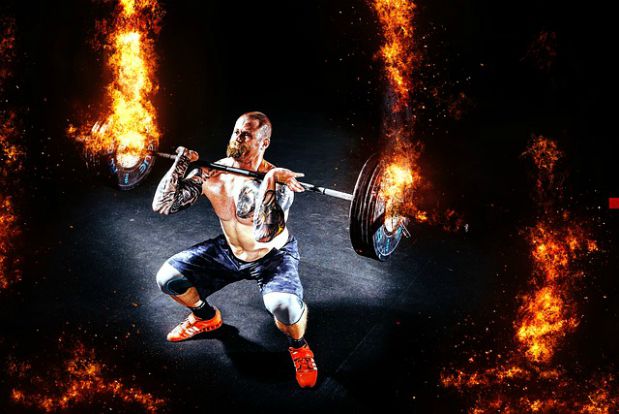The 10 Best Core Exercises – Core Strengthening Exercises
The 10 Best Core Exercises
Delavier, F. (2010). Strength training anatomy Paris: Éditions Vigot
by Travis Wade
Core Workouts: From Sit-Up Rookie to Functional Fitness Pro
Core exercises were my first deliberate foray into fitness. As a kid, I decided to start working out for a noble cause: impressing girls. My arsenal of knowledge at the time consisted of two moves—the sit-up and the push-up. Naturally, I picked sit-ups, reasoning that they’d magically sculpt my abs into a magnet for admiration.
So, I started doing sit-ups on my bed. A thousand sit-ups later, I was sore. But my commitment to the cause was unwavering (I really liked girls). The next night, I repeated the torture. The soreness wasn’t what made me stop doing sit-ups, though. It was science—and a sore sacrum. Now I know better, and so will you. Here’s why sit-ups aren’t your best bet and what to do instead.
Why Sit-Ups Are the Dinosaur of Core Workouts
The sit-up focuses on the rectus abdominis, a single set of muscles in your core. Worse, they can wreak havoc on your spine, especially the last vertebra and sacrum, which get pushed around like a stressed-out office worker until something pops out of alignment. No bueno.
Instead, let’s embrace safer, more comprehensive core exercises. Trust me, your abs (and your chiropractor) will thank you.
Core Strength: The Foundation of All Power
Core strength is where every movement begins. It’s your body’s foundation—your inner tree trunk. When you contract your core muscles, they act like a clamp around your midsection, raising intra-abdominal pressure and stabilizing your entire body. That’s why the strongest people on earth have cores like sequoias, not saplings. Here are the best exercises to build that trunk. For more tips on strength, see my article on strength.
Core Control: The Secret to Athletic Power

Core Control: The Secret to Athletic Power
Core control is often overlooked but critical. Your core muscles usually fire on autopilot, but learning to activate them on-demand unlocks freakish athletic potential. Imagine being able to summon core strength whenever you need it. That’s what core control training delivers.
Core Stability: Stay Solid, Avoid Injuries
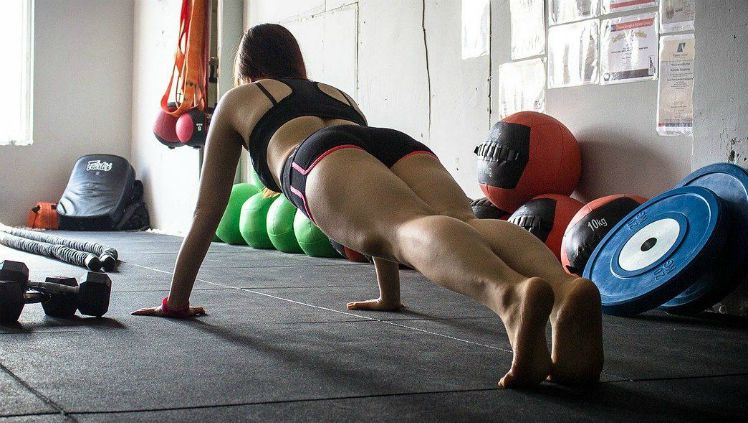
Core stability keeps your body from buckling under pressure—literally. Most of my new clients have weak core muscles, but the good news is that core muscles heal and strengthen quickly. Strengthen your core stability, and you’ll be standing tall while others are limping off the field.
Intra-Abdominal Pressure: The Powerhouse Principle
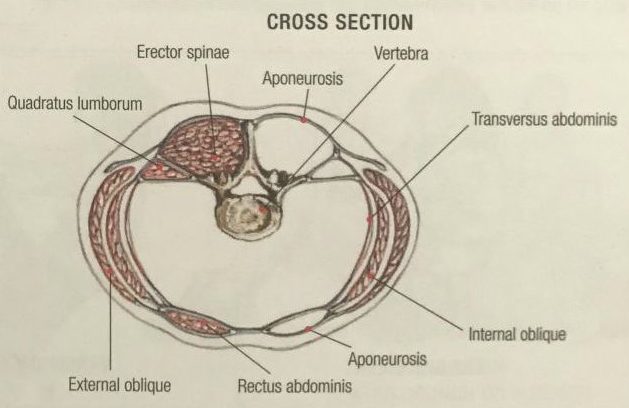
Delavier, F. (2010). Strength training anatomy Paris: Éditions Vigot
Intra-abdominal pressure is your body’s internal armour. Picture your core as a pressure chamber with the diaphragm on top, the pelvic floor on the bottom, and muscles like the obliques and transversus abdominis forming the walls. Whenever you push, pull, or lift, your body first braces this chamber. Want maximum strength? Hold your breath—this lets you contract your core muscles harder than a toddler holding onto a candy bar.
The Diaphragm: Your Body’s Built-In Elevator Operator
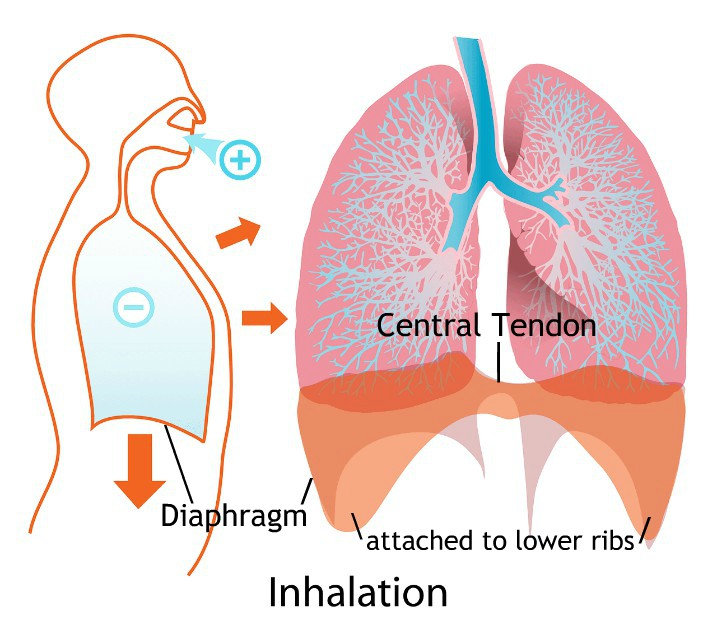
The diaphragm is a multitasking marvel. At its top sits a tendon-like tissue called the central tendon. The muscles of the diaphragm are anchored to this tendon and the lower ribs. When these muscles contract, the central tendon gets pulled downward like an elevator descending to the lobby, and politely telling your abdominal organs to scoot over in the process, making space for your lungs to fill with air. When you relax, the tendon takes the elevator back up, pushing air out of the lungs. This little up-and-down dance is what causes your belly to rise and fall with every breath.
1. Diaphragmatic Breathing Technique
Let’s put the diaphragm to work in the most relaxing way possible: lying down.
- Set the Scene: Lay on your back—either on the ground or a comfy bed—with your knees bent and supported by a pillow. It’s basically the VIP lounge of breathing positions.
- Hand Placement: Place one hand on your chest and the other on your stomach. The hand on your chest is there to chill out and do absolutely nothing. The hand on your stomach is the star of the show and should rise and fall as you breathe.
- Inhale: Breathe in deeply through your nose, letting your stomach expand.
- Exhale: Tighten your abs and slowly breathe out through pursed lips, as if you’re blowing out birthday candles one by one to make it dramatic.
Once you’ve tried this a few times, you’ll feel the muscles at work. Bonus? It’s so simple, you can do it anywhere—lying down, sitting, or even in a boring meeting (just try not to look too zen). This exercise is the perfect way to connect with your core, calm your mind, and remind yourself that breathing is an underrated superpower.
2. Sandbag Breathing
Welcome to the next level of diaphragm development: sandbag breathing. A favorite in yoga circles, this exercise not only strengthens your diaphragm but also trains it to work on autopilot, like cruise control for your breathing. Bonus? It takes a load off your nervous system, so it’s practically a spa day for your insides.
Here’s how it works: Lie down flat on your back—supine if you want to sound fancy. Get cozy, maybe toss in a pillow under your knees for good measure. Start with slow, relaxed breaths, paying attention to the rise and fall of your belly. Now, add the star of the show: a sandbag. Gently place it on your abdomen and keep breathing.
No sandbag handy? No problem! A pillow with weighted object (within reason—maybe skip the 86kg kettlebell) will do the trick. The key is to feel the added resistance as you breathe, building strength in your diaphragm. Overachievers can up the weight gradually, but no need to turn this into a strongman competition.
This technique is as simple as it is effective. Just lie down, breathe, and let gravity do the heavy lifting—literally.
Do these core exercises for about five to ten minutes at a time.
Rectus Abdominis: The Gateway to the Six-Pack (and So Much More)
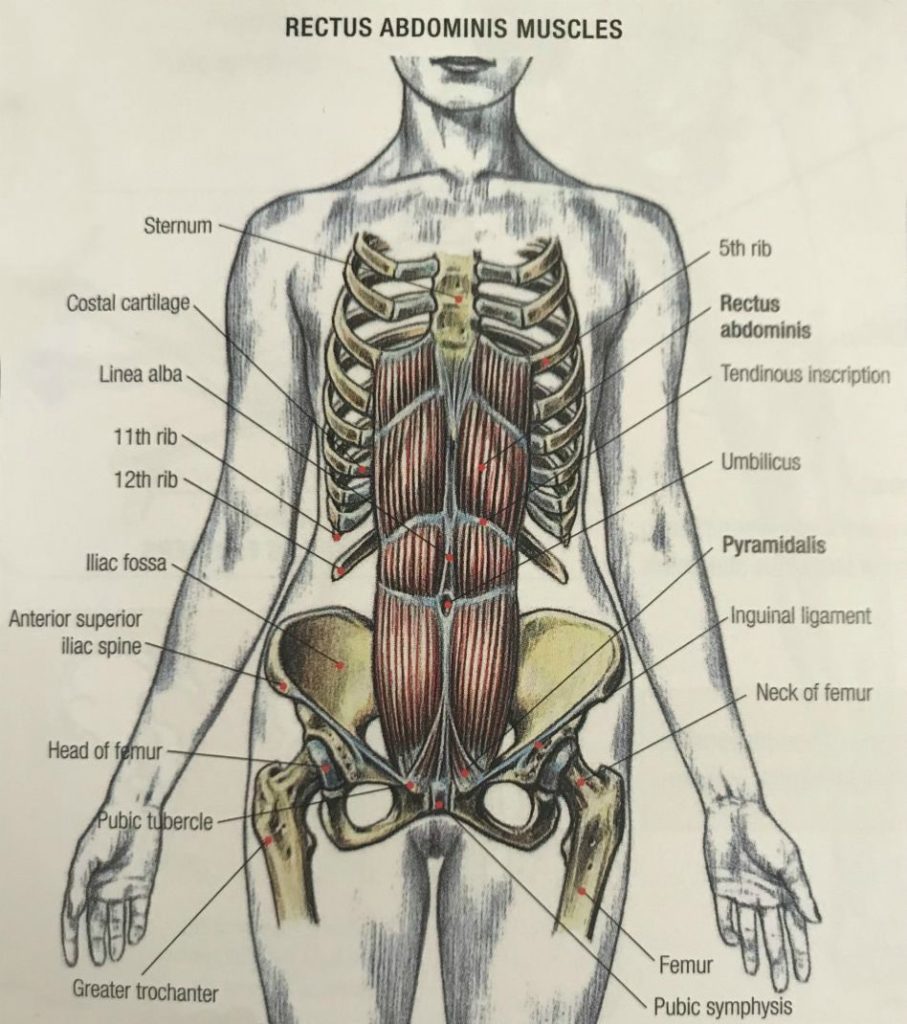
Delavier, F. (2010). Strength training anatomy Paris: Éditions Vigot
Ah, the rectus abdominis—the showboater of the abdominal world. These are the muscles that bring you the coveted six-pack, or at least the illusion of one when the light hits just right. Contrary to popular belief (and late-night infomercials), doing a thousand sit-ups a night won’t chisel out those abs. Spoiler alert: six-packs are made in the kitchen, not on your bedroom floor. That said, strengthening the rectus abdominis is crucial for building core stability and increasing your intra-abdominal pressure. So, let’s work smarter, not harder.
3. Head and Chest Lift
This exercise is simple, effective, and won’t leave you questioning your life choices the next day. Start by lying flat on your back—supine again, because we’re sticking with the fancy talk. Bend one knee up while leaving the other leg relaxed. Place your hands behind your lower back to maintain its natural curve (no flat pancakes here).
Now, imagine there’s a scale under your head and shoulders. Your mission? Lift just enough so that the scale reads zero. No more, no less. Keep your head aligned with your torso—no craning your neck or smuggling your chin into your chest. Hold the position for a few seconds, then gracefully lower back down and repeat.
This move may not feel like much, but trust me, your abs are putting in the work. It’s like a low-key core workout with none of the drama.
4. Plank: The Core’s Gold Standard (No Sagging Allowed)
Ah, the plank—the exercise everyone loves to hate. Simple in concept but brutal in execution, it’s the ultimate test of core strength and mental resilience. However, before you dive in, let’s talk about form, because a sloppy plank isn’t just embarrassing—it’s a fast track to a sore back and a cranky spine.
Rule #1: Don’t let your lower back sag like a hammock under the weight of summer tourists. If you do, the pressure shifts from your core to your spine, and trust me, your spine will not appreciate the extra workload.
Rule #2: Don’t pike your hips up into the air like you’re auditioning for a downward dog contest. This isn’t yoga, and your goal is a straight, solid line—not a mountain range.
Finding that perfect alignment takes practice (and possibly a few self-recriminating looks in the mirror), but once you nail it, you’ll feel like a human plank of steel—strong, stable, and slightly smug. Just remember, it’s not about how long you can hold it; it’s about how well you can hold it.
5. Plank Circuit: Because Static is So Last Season
Now that you’ve mastered the art of standing still—well, lying still—it’s time to level up with some movement. Why? Because life doesn’t happen in one position. Unless you’re auditioning to be a mannequin, you need strength that works in motion.
Adding movement to your plank transforms it from a static core challenge into a full-body symphony of coordination and control. Think of it as upgrading from a flip phone to a smartphone—your plank just got smarter and more functional.
Feel free to get creative with the movements! Shoulder taps, knee drives, leg lifts—whatever fits your vibe (and doesn’t throw you face-first into the floor). For inspiration, check out the video below, where I demonstrate some of my favorite moves. Spoiler alert: They’ll make you feel like a fitness ninja.
Obliques Exercises
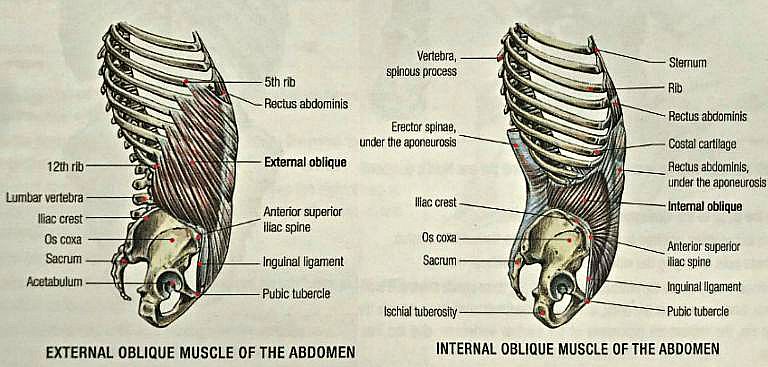
Delavier, F. (2010). Strength training anatomy Paris: Éditions Vigot
The obliques are the multitaskers of your abdominal muscles, running diagonally along the sides of your torso like stylish muscle suspenders. They’re the reason you can twist, turn, and look dramatically over your shoulder in a movie-worthy way.
These muscles work in harmony with the quadratus lumborum—the unsung hero of stability and balance—to keep you upright, coordinated, and moving smoothly. Think of the obliques as your core’s twisty sidekicks, with both inner and outer layers teaming up to handle everything from yoga poses to reaching for snacks on the top shelf. They’re the reason your body doesn’t resemble a stick figure when you move.
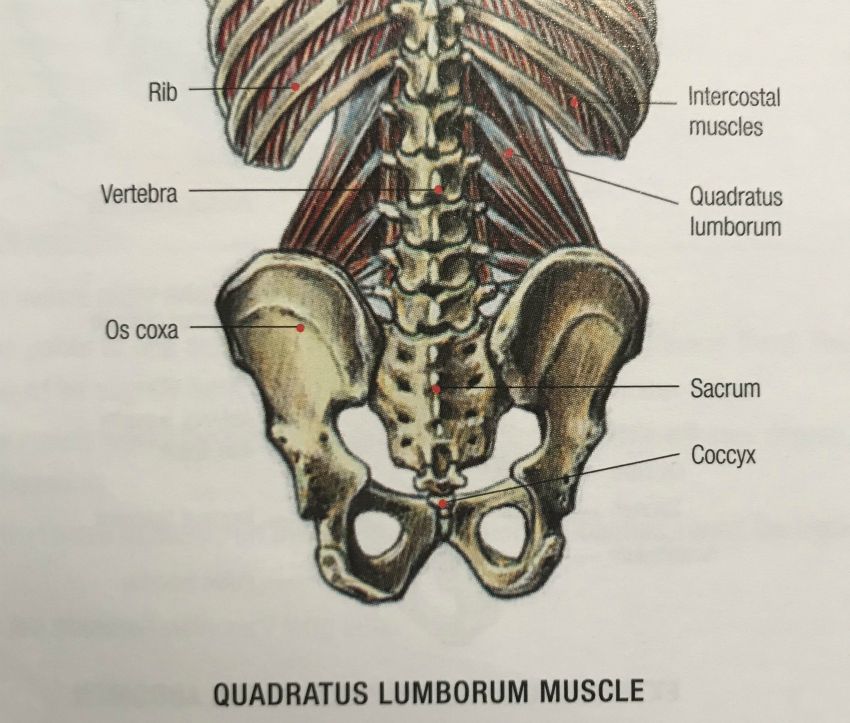
Delavier, F. (2010). Strength training anatomy Paris: Éditions Vigot
6. Anti-Rotation
Anti-rotation exercises may sound like they involve standing perfectly still and resisting the urge to spin in circles, but they’re actually about building serious core strength. Think of it as your body’s way of learning to stay rock-solid when life (or a resistance band) tries to throw you off balance.
To do this, grab a cable at chest height or a resistance band (bonus points if it matches your gym outfit). Stand perpendicular to the pulley or band, with your feet slightly wider than hip-distance apart—basically a power stance. Bend your knees and hips to lower your center of gravity, stabilize your core, and whatever you do, keep your butt in check. No sticking it out; this isn’t a Beyoncé music video. Tighten your abs—stretched-out abs are about as useful as a stretched-out slinky.
Now, grip the band with both hands at your chest and extend your arms straight out in front of you, as if you’re offering someone an invisible trophy. Don’t lock your elbows, but stretch them fully, then bring your hands back to your chest. The slower you move, the more you’ll feel your core firing up, like it’s training for a superhero role. Keep your body symmetrical, your butt low, and remember: the goal is to stay steady while the band tries to drag you into chaos.
7. Side Plank
So, you’ve mastered static oblique exercises, and now it’s time to make things a little more interesting—because who doesn’t love a challenge with a touch of wobbly humiliation? Enter the side plank with movement: an all-star for your obliques, glutes, and that underappreciated quadratus lumborum. (Yes, that’s a real muscle, not a Harry Potter spell.)
Here’s how it works: Lie on your side, propped up on your elbow, looking like a casual beachgoer. Bend your knees at a nice 90-degree angle—geometry, but make it fitness. Lift your hips sky-high like you’re trying to prove a point to gravity. Then, lift your top leg as if you’re auditioning for a synchronized swimming routine on land.
Start by holding this position still; it’s trickier than it looks. Once you’re a side-plank Jedi, you can add some movement—like lowering your hips halfway down and back up—just to keep things spicy.
The real challenge? Keeping your core engaged the entire time. No twisting, no sagging, and definitely no “duck butt” sticking out. Move slow and steady, like you’re in a high-stakes fitness chess game. Your hips shouldn’t touch the ground, and your legs should stay apart. Once you’ve nailed it, flip over and repeat on the other side. And if you feel like collapsing halfway through, just remember: every side plank gets you closer to abs and balance so impressive they might just deserve their own fan club.
The Pelvic Floor
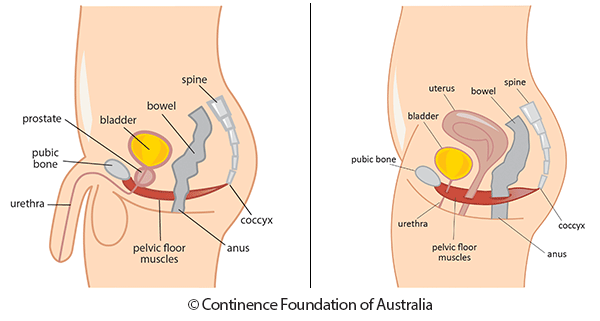
From: https://www.continence.org.au/pages/how-do-pelvic-floor-muscles-help.html
The pelvic floor muscles stretch like a well-engineered hammock from the tailbone to the pubic bone, holding your organs aloft like VIP guests at a party. For men, these muscles can clamp down to close off the anus and urethra, like a built-in security system. For women, the pelvic floor does the same but adds the uterus to its guest list of areas to “seal off.” Multitasking at its finest!
8. Kegel Exercises
Ah, the humble Kegel exercise—a small squeeze with big benefits. To perform a Kegel, focus on tightening your orifices like you’re trying to stop a sneeze… in every possible way. Squeeze hard, release, repeat. It’s the kind of workout you can do anywhere without anyone being the wiser (unless you give yourself away with an overly focused expression).
If your goal is to avoid incontinence, repetition is key. Think of it like training for a marathon but without the sweaty gear. The nervous system is the coach here, improving muscle tone over time. A solid plan? Do a set of ten every time you sit down—whether it’s at your desk, on the couch, or, fittingly, on the toilet.
The beauty of Kegels is in their discretion and effectiveness, but the key is doing them correctly. Knowing these muscles exist and how to fire them at will is your secret weapon. And no worries—there’s no demo for this one. Some things are best left to the imagination.
How To Work the Transversus Abdominis
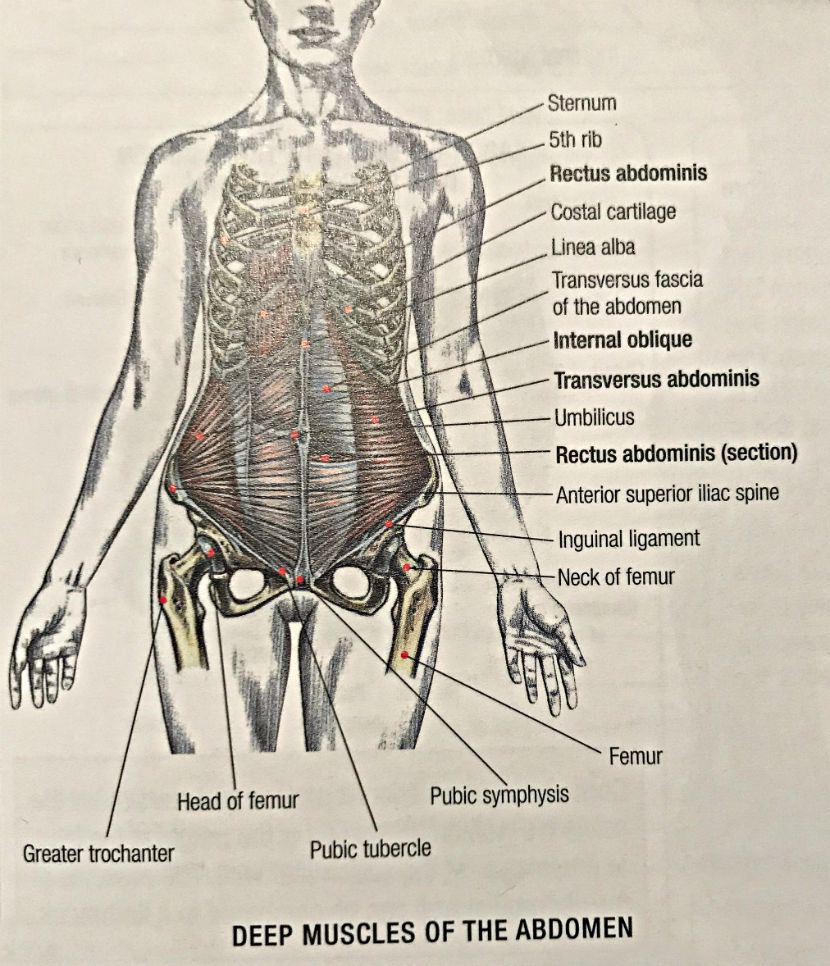
Delavier, F. (2010). Strength training anatomy Paris: Éditions Vigot
The transversus abdominis is like the unsung hero of your core—quiet, unassuming, but absolutely vital. This muscle wraps around your midsection like a corset, cinching everything in to make you as solid as a tree trunk. Bonus points: when it’s toned, it can help sculpt that enviable silhouette. Function and fashion, anyone?
Anatomically, the transversus abdominis hangs out mostly on the sides, chilling near your obliques. Think of it as the innermost layer of a very stylish three-layer abdominal lasagna: external obliques on the outside, internal obliques in the middle, and the transversus abdominis as the hidden, super-supportive bottom layer.
In the center, the transversus abdominis connects to the rectus abdominis sheath, which in turn attaches to the linea alba—a tendon-like structure that stretches from your sternum to your pubis, right down the middle. The linea alba is like the zipper keeping everything neat and symmetrical. It might not win a beauty contest, but without it, things would get a bit messy in the core department.
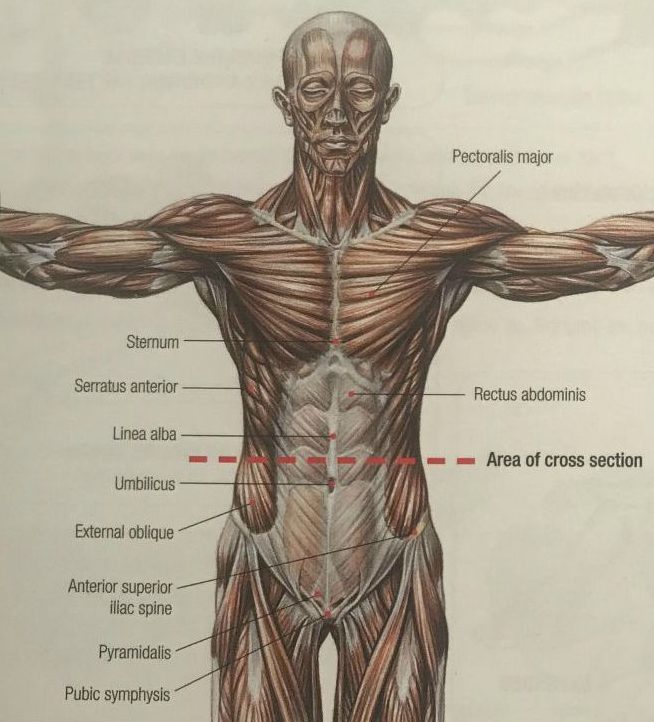

Delavier, F. (2010). Strength training anatomy Paris: Éditions Vigot
The transversus abdominis is like the architectural blueprint of your core, with its top section originating along the inner aspect of the ribs near the sternum. These fibers stretch horizontally across your midsection, effectively creating a muscular corset that screams “core stability” (and maybe a little bit of “look at me”).
The origins don’t stop at the ribs; they travel all the way down to the twelfth rib like an overachieving band of fibers. Below that, the muscle attaches to the fascia of the mid and lower spine, adding a touch of spinal elegance. For its grand finale, the lower part stakes its claim on the pelvic bone and inguinal ligament—because even your core muscles appreciate a strong foundation.
It’s a well-structured system that holds everything together and keeps you upright, while also quietly judging your lack of proper posture.
This muscle has an interesting relationship with the rectus abdominis. Below the belly button, the transversus abdominis is the more superficial one, showing off on top of its neighbor. But above the belly button, it politely steps aside and tucks behind the rectus abdominis. There’s even a little pocket right below the navel where the rectus abdominis sneaks behind on each side, like it’s playing hide-and-seek with your core anatomy.
Deadbug: The Transversus Abdominis Whisperer
To awaken your transversus abdominis, the deadbug exercise is a personal trainer favorite—no actual bugs required, thankfully. Start by lying supine on the floor, arms extended straight up from your shoulders like you’re signaling a touchdown. Bend your hips and knees at 90 degrees in a position we affectionately call “ninety-ninety.” At this point, you’ll look like a bug flipped on its back—don’t worry, it’s part of the charm.
From here, push your lower back into the floor like you’re trying to leave a permanent impression. Suck in your gut like you’re squeezing into skinny jeans that haven’t fit since high school. Then, exhale every last bit of air from your lungs. Not a polite sigh—really breathe out harder! Keep going until you’re one exhale away from convincing your neighbors you’re inflating a hot air balloon. Congratulations—you’re officially working your transversus abdominis like a pro!
10. Deadbug With Movement
Adding movement to the deadbug is where things get interesting—and slightly comical if your coordination is a little off. This progression demands timing, coordination, and a core that’s ready to play conductor for your body’s orchestra.
Start in the same “upside-down tabletop” position as the original deadbug, with your lower back pressing firmly into the floor. Now, here comes the tricky part: extend one arm and the opposite leg straight out. Yep, it’s a game of opposites—like patting your head and rubbing your stomach, but with more abdominal drama.
As you extend, breathe out like you’re trying to inflate a balloon across the room. Push your abs to their limits—seriously, squeeze as if your core is auditioning for a superhero role. Then return to the starting position and switch to the other arm and leg. Rinse, repeat, and marvel at your coordination (or laugh at the lack thereof).
This movement is like the Swiss Army knife of core exercises. It strengthens stability, enhances maximum strength, and hones core control all in one go. No wonder I include deadbug variations with all my clients—it’s functional fitness with a side of humility!
All the muscles we’ve covered play a starring role in generating intra-abdominal pressure, providing stability, enhancing core control, and boosting overall body strength. Sure, your gym teacher might have preached the gospel of endless sit-ups—mine sure did—but science has since stepped in to tell us, “There’s a better way, folks.” Spoiler alert: it’s safer, more effective, and doesn’t involve cranking out a thousand sit-ups every night.
Speaking of which, I tried the whole thousand sit-ups a night routine. Spoiler #2: it didn’t work. No six-pack, no swooning admirers, just sore abs and shattered dreams. These days, my core is stronger than ever, and—well—still no swooning admirers. But hey, who needs that when you’ve got stability for days and a rock-solid brace?
So forget the outdated fitness myths. Follow the science, hone your technique, and channel your inner core warrior. Breathe. Brace. Be badass. Because life’s too short for bad workouts and unnecessary back pain.
I wish you lots of health, love and happiness!
Travis Wade
The only holistic personal trainer in Edmonton.
Want To Get Started On A New Lifstyle Right Away?
Or
Would You Like A Plan To Achieve Your Fitness Goals?
Sign Up For Online Personal Training!

